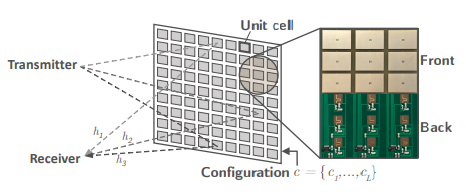2025-02-24 マックス・プランク研究所(MPG)
<関連情報>
再構成可能なインテリジェント表面を用いた空間領域のワイヤレス・ジャミング Spatial-Domain Wireless Jamming with Reconfigurable Intelligent Surfaces
Philipp Mackensen, Paul Staat, Stefan Roth, Aydin Sezgin, Christof Paar, Veelasha Moonsamy
arXiv last revised 17 Dec 2024 (this version, v3)
DOI:https://doi.org/10.48550/arXiv.2402.13773

Abstract
Wireless communication infrastructure is a cornerstone of modern digital society, yet it remains vulnerable to the persistent threat of wireless jamming. Attackers can easily create radio interference to overshadow legitimate signals, leading to denial of service. The broadcast nature of radio signal propagation makes such attacks possible in the first place, but at the same time poses a challenge for the attacker: The jamming signal does not only reach the victim device but also other neighboring devices, preventing precise attack targeting.
In this work, we solve this challenge by leveraging the emerging RIS technology, for the first time, for precise delivery of jamming signals. In particular, we propose a novel approach that allows for environment-adaptive spatial control of wireless jamming signals, granting a new degree of freedom to perform jamming attacks. We explore this novel method with extensive experimentation and demonstrate that our approach can disable the wireless communication of one or multiple victim devices while leaving neighboring devices unaffected. Notably, our method extends to challenging scenarios where wireless devices are very close to each other: We demonstrate complete denial-of-service of a Wi-Fi device while a second device located at a distance as close as 5 mm remains unaffected, sustaining wireless communication at a data rate of 25 Mbit/s. Lastly, we conclude by proposing potential countermeasures to thwart RIS-based spatial domain wireless jamming attacks.



